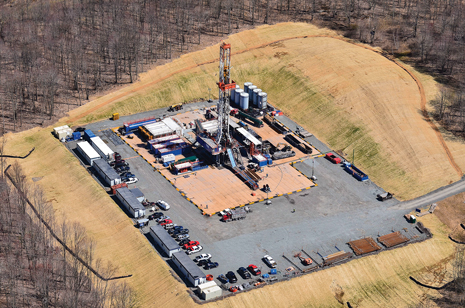Liner-less technology enhances wellsite spill containment
Increased onshore drilling activity means an increased risk of spills that can occur at the well site—spills that can harm the environment and pose safety issues.
Increased onshore drilling activity means an increased risk of spills that can occur at the well site—spills that can harm the environment and pose safety issues. As a result, operators are searching for innovative, cost-effective solutions in the handling of spills—solutions that will simultaneously help manage rising costs, ensure safety, and increase efficiencies. LINER CHALLENGESDrilling operators use between 10,000 lb to 20,000 lb of liner material per drill site. The liners are damaged and replaced at each site, anywhere from two to seven times throughout the life of the well.1 When drilling is complete, these liners must be removed from the site, transported and disposed of, in accordance with the law. Both operators and landfill site owners are well aware that disposing of liners is a costly, time-consuming and cumbersome process. In addition to rising costs, the industry faces another growing concern: shrinking landfill capacity. Because of this, landfill operators in many regions are raising prices, or in some instances, entirely prohibiting the disposal of liners. In 2009, a county landfill in Colorado stopped accepting liners due to toxicity concerns—the increasing number of liners exceeded facility capacity2. And, much like in Colorado, certain landfills in Pennsylvania will no longer accept liners. With few alternatives, operators have turned to reusable liners in the hopes that these will minimize costs associated with liner maintenance, repair and replacement. However, while reusable liners are thicker and more durable than traditional liners, their overall life expectancy and reliability remains unknown. Questions also abound over the additional costs of required cleaning before transport. Another emerging trend involves pad liner recycling programs.3 These programs slow the consumption of valuable landfill space, but present their own set of challenges: pad liner recycling programs can be an intense process, as plastic liners are difficult to recycle. And, some liners that become partially contaminated with hydrocarbons and other drilling-related waste cannot be recycled, or must have the contaminated portions cut away and disposed of as residual waste. SUSTAINABLE TECHNOLOGYWith liner usage in the Marcellus and Utica shale plays totaling 100 million pounds in 20114, an engineered, reusable spill containment system that offers enhanced protection can dramatically reduce the need for liner material and improve site protection. The system offers a protective benefit for landowners, cost and time benefits for drilling operators, and reduces overflow risk for landfill owners. One such engineered system is Newpark Mats & Integrated Services’ Dura-Base Defender Spill Containment System. This system incorporates advanced-composite mats into a complete system, with seals, wall berms, drivable berms, and a specialized cellar protection system. DX4 sealing technology offers two layers of protection around every mat, across the entire pad. The seals are integrated into each mat, ensuring that the on-site installation of the system is efficient and requires minimal labor. Cellar protection system provides a third layer of security at a drill site’s most high-risk spill area—the cellar. Integrated wall berms, drive-over berms. The berms connect directly to the sealed matting system. The drive-over berms allow equipment and foot traffic to easily access the site, while wall berms offer more splash protection. Specialized handling. Custom-designed grappling trucks are used to deliver and install the Defender system, maximizing seal-to-seal integrity and damage protection. The Dura-Base Defender systems are in use in shale plays throughout North America, including the Marcellus, Eagle Ford and Niobrara.
|

- Coiled tubing drilling’s role in the energy transition (March 2024)
- Digital tool kit enhances real-time decision-making to improve drilling efficiency and performance (February 2024)
- E&P outside the U.S. maintains a disciplined pace (February 2024)
- Prices and governmental policies combine to stymie Canadian upstream growth (February 2024)
- U.S. operators reduce activity as crude prices plunge (February 2024)
- U.S. producing gas wells increase despite low prices (February 2024)
- Applying ultra-deep LWD resistivity technology successfully in a SAGD operation (May 2019)
- Adoption of wireless intelligent completions advances (May 2019)
- Majors double down as takeaway crunch eases (April 2019)
- What’s new in well logging and formation evaluation (April 2019)
- Qualification of a 20,000-psi subsea BOP: A collaborative approach (February 2019)
- ConocoPhillips’ Greg Leveille sees rapid trajectory of technical advancement continuing (February 2019)



